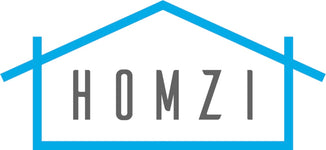Residential Lighting Glossary:
1. Ambient Lighting: General, overall lighting that provides a uniform level of illumination throughout a room.
2. Task Lighting: Lighting designed for specific tasks, such as reading, cooking, or working. It provides concentrated illumination in a particular area.
3. Accent Lighting: Lighting used to highlight specific objects or areas, such as artwork or architectural features.
4. Incandescent Bulb: A traditional light bulb that produces light through heating a filament inside a glass bulb.
5. LED (Light Emitting Diode): A highly energy-efficient lighting technology that uses semiconductors to emit light.
6. CFL (Compact Fluorescent Lamp): A type of energy-efficient lighting that uses a fluorescent tube twisted into a compact shape.
7. Fixture: The housing or casing that holds the light source and directs the light, such as a lamp, chandelier, or pendant.
8. Lumens: A measure of the total amount of visible light emitted by a light source. It indicates brightness.
9. Color Temperature: A numerical value that describes the color appearance of a light source, typically measured in Kelvin (K). Lower Kelvin values appear warmer (yellowish), while higher values appear cooler (bluish).
10. Dimmer: A device used to control the intensity of light, allowing you to adjust brightness levels.
11. Sconce: A type of wall-mounted light fixture, often used for ambient or accent lighting.
12. Chandelier: A decorative ceiling-mounted light fixture with multiple arms or branches, often adorned with crystals or decorative elements.
13. Pendant Light: A suspended light fixture that hangs from the ceiling, often used for task or accent lighting.
14. Flush Mount: A ceiling light fixture that is mounted directly against the ceiling, providing ambient lighting.
15. Recessed Lighting: Light fixtures that are installed into a hollow opening in the ceiling, creating a clean and unobtrusive appearance.
Ceiling Fan Glossary:
1. Blades: The rotating components of a ceiling fan that circulate air.
2. Downrod: A rod that connects the fan motor to the ceiling mounting bracket, allowing for different mounting heights.
3. Motor: The core component of the fan that powers the rotation of the blades.
4. CFM (Cubic Feet per Minute): A measurement of the amount of air a ceiling fan can move in one minute. It indicates the fan's airflow efficiency.
5. Blade Span: The measurement from the tip of one fan blade to the tip of the opposite blade, indicating the size of the fan.
6. Remote Control: A device that allows you to control the fan's speed and lighting from a distance.
7. Damp-Rated: Fans designed for use in damp environments but not in direct contact with water, such as covered outdoor areas.
8. Wet-Rated: Fans designed for use in wet environments, including outdoor locations exposed to rain.
9. Reversible Blades: Blades that can be flipped to change the fan's appearance or the direction of air circulation (winter vs. summer mode).
10. Hugger Fan: A low-profile ceiling fan designed to be mounted directly against the ceiling, ideal for rooms with low ceilings.
11. Ceiling Fan Light Kit: An attachment that provides lighting to the fan, often featuring one or more light bulbs.
12. Balancing Kit: A set of weights used to balance the fan blades and reduce wobbling.
13. Smart Ceiling Fan: A fan that can be controlled remotely through a smartphone app or voice commands.
14. Fan Blade Pitch: The angle at which the fan blades are set, influencing the fan's airflow efficiency.
15. Pull Chain: A chain or cord used to manually adjust the fan's speed and turn the light on and off.

